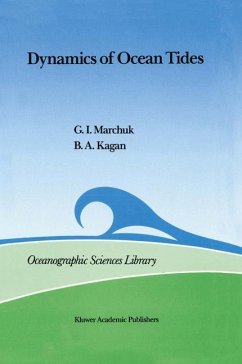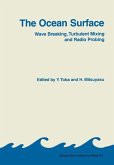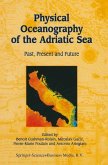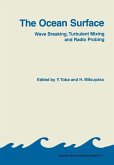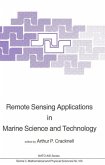Andere Kunden interessierten sich auch für
![Dynamics of Ocean Tides Dynamics of Ocean Tides]() Guri I. MarchukDynamics of Ocean Tides115,99 €
Guri I. MarchukDynamics of Ocean Tides115,99 €![The Ocean Surface The Ocean Surface]() Y. Toba / H. Mitsuyasu (Hgg.)The Ocean Surface152,99 €
Y. Toba / H. Mitsuyasu (Hgg.)The Ocean Surface152,99 €![Air-Sea Exchange of Gases and Particles Air-Sea Exchange of Gases and Particles]() P.S. Liss / W.G.N. Slinn (Hgg.)Air-Sea Exchange of Gases and Particles229,99 €
P.S. Liss / W.G.N. Slinn (Hgg.)Air-Sea Exchange of Gases and Particles229,99 €![Physical Oceanography of the Adriatic Sea Physical Oceanography of the Adriatic Sea]() Cushman-RoisinPhysical Oceanography of the Adriatic Sea138,99 €
Cushman-RoisinPhysical Oceanography of the Adriatic Sea138,99 €![The Ocean Surface The Ocean Surface]() The Ocean Surface153,99 €
The Ocean Surface153,99 €![Advanced Physical Oceanographic Numerical Modelling Advanced Physical Oceanographic Numerical Modelling]() James J. O'Brien (Hrsg.)Advanced Physical Oceanographic Numerical Modelling231,99 €
James J. O'Brien (Hrsg.)Advanced Physical Oceanographic Numerical Modelling231,99 €![Remote Sensing Applications in Marine Science and Technology Remote Sensing Applications in Marine Science and Technology]() A.P. Cracknell (Hrsg.)Remote Sensing Applications in Marine Science and Technology151,99 €
A.P. Cracknell (Hrsg.)Remote Sensing Applications in Marine Science and Technology151,99 €-
-
-
Produktdetails
- Oceanographic Sciences Library 3
- Verlag: Springer / Springer Netherlands
- Artikelnr. des Verlages: 978-90-277-2552-3
- 1989
- Seitenzahl: 344
- Erscheinungstermin: 31. Mai 1989
- Englisch
- Abmessung: 241mm x 160mm x 24mm
- Gewicht: 678g
- ISBN-13: 9789027725523
- ISBN-10: 9027725527
- Artikelnr.: 21779941
- Herstellerkennzeichnung
- Springer-Verlag GmbH
- Tiergartenstr. 17
- 69121 Heidelberg
- ProductSafety@springernature.com
1: Tidal Potential.- 1.1. The Tide-Generating Forces in the Ocean.- 1.2. Tidal Potential.- 1.3. Harmonic Analysis of the Tidal Potential.- 1.4. Additional Potentials of Deformation.- 2: Methods and Results of Experimental Studies of Ocean Tides.- 2.1. Direct Measurements of Tidal Elevations.- 2.2. Satellite Data.- 2.3. Determination of Ocean Tides from Gravimetric Data.- 3: Qualitative Studies of the Tidal Dynamics Equations.- 3.1. Tidal Dynamics Equations.- 3.2. Simplification of the Tidal Dynamics Equations, Boundary Conditions.- 3.3. Basic Notions and Definitions.- 3.4. Uniqueness Theorem.- 3.5. A Priori Estimates.- 3.6. Existence Theorem.- 3.7. Solvability of the Three-Dimensional Boundary Value Problem of Tidal Dynamics: Homogeneous Ocean.- 3.8. Solvability of the Three-Dimensional Boundary Value Problem of Tidal Dynamics: Stratified Ocean.- 3.9. Asymptotic Behavior of the Solution of Tidal Dynamics Equations when t ? ?.- 4: Free Oscillations in the World Ocean.- 4.1. Rayleigh's Ratio.- 4.2. Analytical Solutions.- 4.3. Numerical Solutions.- 4.4. Elementary Modes of Free Oscillations.- 5: Forced Tidal Oscillations in the World Ocean.- 5.1. Analytical Solutions.- 5.2. Numerical Solutions.- 5.3. Numerical Experiments.- 6: Tides in the Ocean-Shelf System.- 6.1. Preliminary Remarks.- 6.2. The Existing Methods of Shelf-Effect Parameterization.- 6.3. The Influence of Shelf Effects on the Tides in an Idealized Ocean.- 6.4. The Influence of Shelf Effects on the Tides in the World Ocean.- 7: Global Interaction of Ocean and Terrestrial Tides.- 7.1. Solvability Conditions of the Problem.- 7.2. Difference Methods of Solution.- 7.3. Results of Numerical Experiments.- 8: Energetics of Ocean Tides.- 8.1. Energy Equation.- 8.2. Astronomical, Geophysical, and SatelliteEstimations of Tidal Energy Dissipation.- 8.3. The Problem of Tidal Energy Dissipation in the Ocean-Earth System.- 8.4. Tidal Energy Dissipation in the Paleoocean.- 9: Bottom Boundary Layer in Tidal Flow: Experimental Data.- 9.1. Motion Regime in the Bottom Boundary Layer.- 9.2. Hydrodynamic Properties of the Sea Bottom.- 9.3. Mean Velocity Profiles.- 9.4. Statistical Characteristics of Turbulent Fluctuations.- 9.5. Unidimensional and Co-Spectra of Velocity Fluctuations, Reynolds Stress.- 9.6. Similarity of Turbulence Structures in Boundary Layers of Different Origin.- 10: Bottom Boundary Layer in Tidal Flow: Theoretical Models.- 10.1. Qualitative Considerations Regarding the Vertical Distribution of the Tidal Velocity in the Bottom Boundary Layer.- 10.2. Bottom Boundary Layer Models Based on A Priori Assignment of the Vertical Turbulent Viscosity Coefficient.- 10.3. Bottom Boundary Layer Models Based on the Closure of Equations with the Help of Semi-Emperical Hypotheses.- 10.4. The Resistance Law in Tidal Flow.- References.
1: Tidal Potential.- 1.1. The Tide-Generating Forces in the Ocean.- 1.2. Tidal Potential.- 1.3. Harmonic Analysis of the Tidal Potential.- 1.4. Additional Potentials of Deformation.- 2: Methods and Results of Experimental Studies of Ocean Tides.- 2.1. Direct Measurements of Tidal Elevations.- 2.2. Satellite Data.- 2.3. Determination of Ocean Tides from Gravimetric Data.- 3: Qualitative Studies of the Tidal Dynamics Equations.- 3.1. Tidal Dynamics Equations.- 3.2. Simplification of the Tidal Dynamics Equations, Boundary Conditions.- 3.3. Basic Notions and Definitions.- 3.4. Uniqueness Theorem.- 3.5. A Priori Estimates.- 3.6. Existence Theorem.- 3.7. Solvability of the Three-Dimensional Boundary Value Problem of Tidal Dynamics: Homogeneous Ocean.- 3.8. Solvability of the Three-Dimensional Boundary Value Problem of Tidal Dynamics: Stratified Ocean.- 3.9. Asymptotic Behavior of the Solution of Tidal Dynamics Equations when t ? ?.- 4: Free Oscillations in the World Ocean.- 4.1. Rayleigh's Ratio.- 4.2. Analytical Solutions.- 4.3. Numerical Solutions.- 4.4. Elementary Modes of Free Oscillations.- 5: Forced Tidal Oscillations in the World Ocean.- 5.1. Analytical Solutions.- 5.2. Numerical Solutions.- 5.3. Numerical Experiments.- 6: Tides in the Ocean-Shelf System.- 6.1. Preliminary Remarks.- 6.2. The Existing Methods of Shelf-Effect Parameterization.- 6.3. The Influence of Shelf Effects on the Tides in an Idealized Ocean.- 6.4. The Influence of Shelf Effects on the Tides in the World Ocean.- 7: Global Interaction of Ocean and Terrestrial Tides.- 7.1. Solvability Conditions of the Problem.- 7.2. Difference Methods of Solution.- 7.3. Results of Numerical Experiments.- 8: Energetics of Ocean Tides.- 8.1. Energy Equation.- 8.2. Astronomical, Geophysical, and SatelliteEstimations of Tidal Energy Dissipation.- 8.3. The Problem of Tidal Energy Dissipation in the Ocean-Earth System.- 8.4. Tidal Energy Dissipation in the Paleoocean.- 9: Bottom Boundary Layer in Tidal Flow: Experimental Data.- 9.1. Motion Regime in the Bottom Boundary Layer.- 9.2. Hydrodynamic Properties of the Sea Bottom.- 9.3. Mean Velocity Profiles.- 9.4. Statistical Characteristics of Turbulent Fluctuations.- 9.5. Unidimensional and Co-Spectra of Velocity Fluctuations, Reynolds Stress.- 9.6. Similarity of Turbulence Structures in Boundary Layers of Different Origin.- 10: Bottom Boundary Layer in Tidal Flow: Theoretical Models.- 10.1. Qualitative Considerations Regarding the Vertical Distribution of the Tidal Velocity in the Bottom Boundary Layer.- 10.2. Bottom Boundary Layer Models Based on A Priori Assignment of the Vertical Turbulent Viscosity Coefficient.- 10.3. Bottom Boundary Layer Models Based on the Closure of Equations with the Help of Semi-Emperical Hypotheses.- 10.4. The Resistance Law in Tidal Flow.- References.

